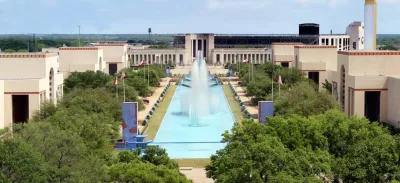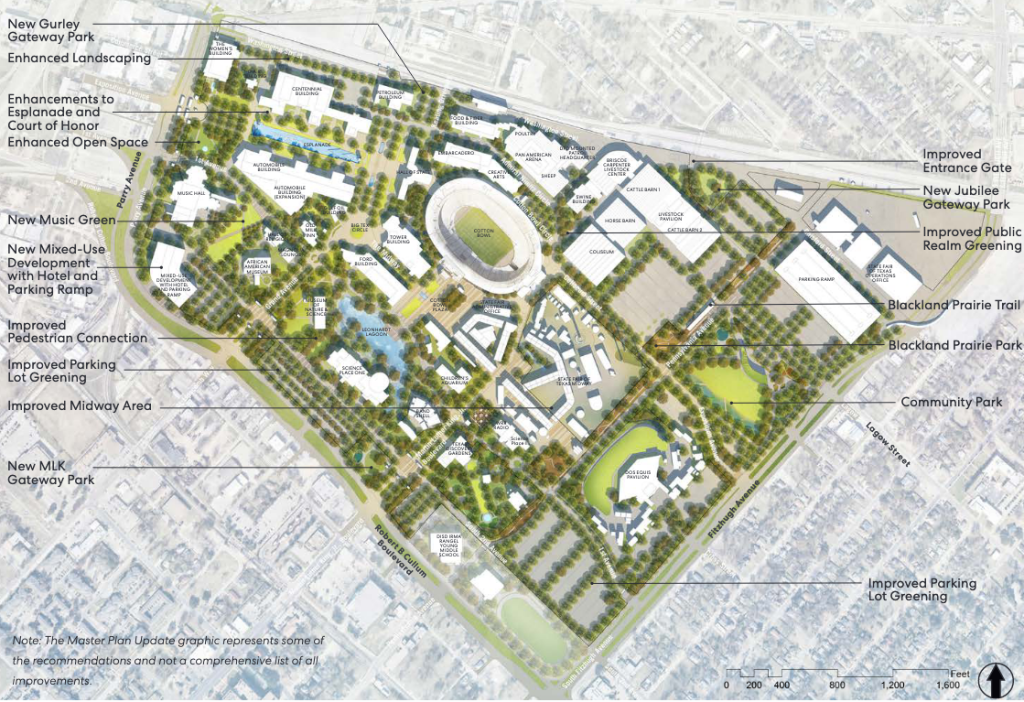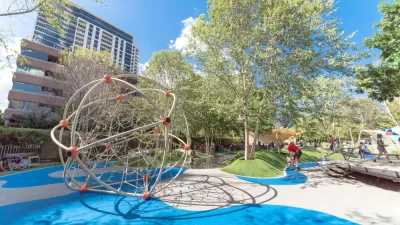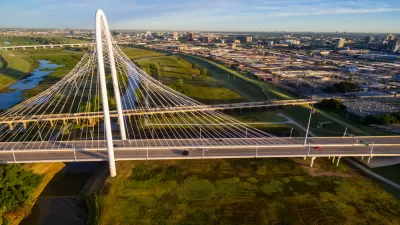A 20-year plan to revitalize a historic Dallas fairground will bring much-needed new green space and multi-use venues to Fair Park.

Built in 1886 to host the annual Texas State Fair, Fair Park has a long history as a vast and diverse public space and events venue. The site briefly served as a U.S. Army camp during World War I before becoming home to the Cotton Bowl stadium in 1926, hosting the eponymous annual college football game. It was also, for a time, home to the Dallas Cowboys professional football team.
Inspired by the City Beautiful Movement, the park’s first planner, George Kessler, designed a space featuring tree-lined boulevards, monumental public art, fountains, and other features meant to create a beautiful and calming public space. After hosting the 1937 World’s Fair, the park retained more than half of the World’s Fair structures, making it the largest collection of Art Deco architecture in the world. One hundred years after its construction, Fair Park was listed as a National Historic Landmark. Today, the park is home to several museums and institutions including an aquarium, music hall, the African American Museum of Dallas, and Dos Equis Pavilion.
Despite its colorful history, the space languished, underused, for decades. While an estimated five million people attend events at Fair Park every year—primarily for the annual Texas State Fair that takes place over three weeks in the fall—it remained underutilized, with much of the area fenced off and without amenities to make it a pleasant space for everyday recreation. Meanwhile, the city used eminent domain to acquire local properties from residents and build surface parking lots where homes once stood.
In 2019, the site came under the management of a public-private partnership, Fair Park First, that seeks to reactivate the site and build a new community park that will bring more events, amenities, and much-needed green space to the area. After a series of missteps by former operators, the new partnership hopes to regain the community’s trust and give back a valuable, welcoming public space and daily destination for surrounding neighborhoods.
Slated to open in 2024, the new master plan, developed by Biederman Redevelopment Ventures (BRV), boasts “a state-of-the-art Community Park with interconnected parklets and trails across the campus, all with regular programming.” Access to the park will be improved for pedestrians, cyclists, and drivers. The master plan envisions restoring and preserving the park’s historic structures, strengthening community inclusion, and attracting new tenants and events to the park’s facilities. The 11-acre Community Park site, which was selected after an extensive public engagement process, will replace an existing 14-acre surface parking lot. The park will be surrounded by a bike trail that will connect to regional trails and stormwater management facilities. While the park’s design has not been finalized, according to Fair Park First, “The community input for the Master Plan Update identified the desire for splash pads, multiple play structures for children of different ages and abilities, Wi-Fi, a performance pavilion, picnic shelters, game tables, food and beverage offerings, fitness trails, a dog park, and flex lawns.”

The park’s designer, Los Angeles-based Studio-MLA, has worked on projects that include Vista Hermosa Natural Park and the Los Angeles County Natural History Museum’s Nature Gardens. The project is privately funded and will remain open during events like the State Fair of Texas as a public park outside of event boundaries, according to Ashley Langworthy of BRV.
Boosters hope the new master plan will breathe life into the historic site and reweave the community together with new amenities in an accessible, welcoming, and vibrant space.

Maui's Vacation Rental Debate Turns Ugly
Verbal attacks, misinformation campaigns and fistfights plague a high-stakes debate to convert thousands of vacation rentals into long-term housing.

Planetizen Federal Action Tracker
A weekly monitor of how Trump’s orders and actions are impacting planners and planning in America.

In Urban Planning, AI Prompting Could be the New Design Thinking
Creativity has long been key to great urban design. What if we see AI as our new creative partner?

King County Supportive Housing Program Offers Hope for Unhoused Residents
The county is taking a ‘Housing First’ approach that prioritizes getting people into housing, then offering wraparound supportive services.

Researchers Use AI to Get Clearer Picture of US Housing
Analysts are using artificial intelligence to supercharge their research by allowing them to comb through data faster. Though these AI tools can be error prone, they save time and housing researchers are optimistic about the future.

Making Shared Micromobility More Inclusive
Cities and shared mobility system operators can do more to include people with disabilities in planning and operations, per a new report.
Urban Design for Planners 1: Software Tools
This six-course series explores essential urban design concepts using open source software and equips planners with the tools they need to participate fully in the urban design process.
Planning for Universal Design
Learn the tools for implementing Universal Design in planning regulations.
planning NEXT
Appalachian Highlands Housing Partners
Gallatin County Department of Planning & Community Development
Mpact (founded as Rail~Volution)
City of Camden Redevelopment Agency
City of Astoria
City of Portland
City of Laramie






























